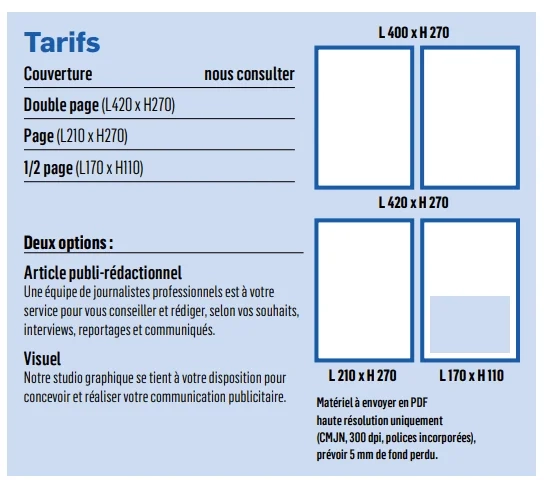Space not available
Reserve this advertising space
Selected ad format
The file format is not recognized
Click here for
upload an ad
Click here to download
an announcement
Here drag and drop or
upload an ad
Send the ad up to 8 days after payment
A link will be sent to you by contact@via-agency.media
Reserved space
Announcement transmitted
Reference

The contribution of the livestock sub-sector is estimated at 6,73% of the GDP. A development strategy has been developed in line with the strategic axes of the Togo 2025 plan.
Space not available
Reserve this advertising space
Selected ad format
The file format is not recognized
Click here for
upload an ad
Click here to download
an announcement
Here drag and drop or
upload an ad
Send the ad up to 8 days after payment
A link will be sent to you by contact@via-agency.media
Reserved space
Announcement transmitted
Reference
Although production in the various sectors, particularly poultry and small ruminants, has significantly improved thanks to PASA, with an increase of 50% in the income of breeders benefiting from this project, Togo still has a deficit in meat products. A deficit estimated at 45% compared to national needs, despite an evolving trend and the support of public and private actors.
A ministry analysis of the livestock reference situation reveals that this sub-sector is still fragile and characterized essentially by the survival of outdated pastoral methods, practices and techniques. Indeed, 99.8% of breeders practice traditional breeding; only 0.2% practice the improved type; 16.7% of breeders administer veterinary care to their animals and 18.9% of breeders vaccinate their animals. In terms of vaccination coverage rates, the study reveals that: 12.5% of sheep, 18.7% of goats and 13.5% of poultry are vaccinated. Local breed animals are in the majority compared to improved ones. Indeed, a small proportion (0.5%) of goats are of improved breed compared to 99.5% of local breed. There are 2.8% of improved breed sheep against 97.2% of local breed. As for poultry, 1% of improved breed for 99% of local breed.
Space not available
Reserve this advertising space
Selected ad format
The file format is not recognized
Click here for
upload an ad
Click here to download
an announcement
Here drag and drop or
upload an ad
Send the ad up to 8 days after payment
A link will be sent to you by contact@via-agency.media
Reserved space
Announcement transmitted
Reference
However, by the end of 2023, annual poultry meat production is expected to almost triple to 60,000 tonnes, while egg production, currently around 188 million, is expected to reach 250 million. These positive prospects represent an extension of the growth dynamics observed since 2010. Indeed, the poultry sector can boast of having recorded an increase of more than 2,00% in the poultry population between 2010 and 2019, which rose from more than 8 million heads to more than 26 million. Through the PASA financed by the World Bank, small family farming is now taking on an entrepreneurial dimension where the profitability of the business is guaranteed to the promoter. The poultry sector is identified in the 2018-2022 PND as a strategic sector to promote meat processing industries and create massive jobs at the national level. According to projections, it could generate up to 150,000 jobs by 2025.
In terms of animal production, the Barkoissi Institute of Work-Study Training for Development (IFAD) is intended to provide an opportunity to develop several animal sectors. The sector has seen the emergence of development zones for cattle production (ZAPB). The government is working to create and strengthen a value chain around this production. Thus, cattle slaughter areas are being created for the processing of meat products, and an artificial insemination project is being implemented to promote improved dairy cow breeds. The implementation of this project should contribute to improving Togo's coverage of dairy resources and, conversely, reducing its quantity of imported milk, which is estimated at 20,000 tons per year.
To address the challenges and free our country from its dependence on the export of meat products, the Ministry held a general meeting of the livestock sector in March 2021 through regional workshops. A development strategy for the livestock sector in Togo is currently being developed in line with the strategic axes of the Togo government roadmap 2020-2025 and the regional livestock investment and development program in West Africa.
Space not available
Reserve this advertising space
Selected ad format
The file format is not recognized
Click here for
upload an ad
Click here to download
an announcement
Here drag and drop or
upload an ad
Send the ad up to 8 days after payment
A link will be sent to you by contact@via-agency.media
Reserved space
Announcement transmitted
Reference

















 A Seat That Transforms into a Bed
A Seat That Transforms into a Bed  In the world of air travel, economy class is often considered the most affordable option. However, at Air Afrika, we believe that affordability shouldn't mean compromising on quality of service. Our class
In the world of air travel, economy class is often considered the most affordable option. However, at Air Afrika, we believe that affordability shouldn't mean compromising on quality of service. Our class









